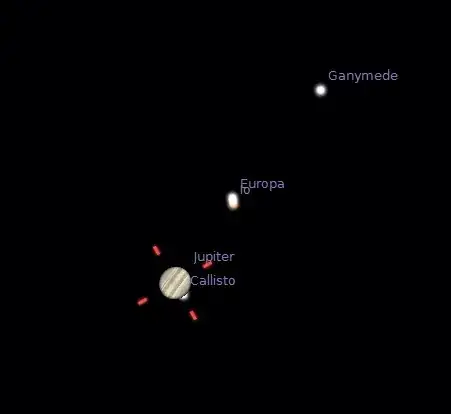A couple days ago, I zoomed in with my 30x optical zoom camera, and after some exposure adjustments, a bright star in the night sky turned into this:
Are those other planets or other stars? Or is that a lens effect?
EDIT: The bright object in question was ~60 degrees above the horizon, and ESE of me (East-south-east). I took the picture on 3-25-16 from Madison, Wisconsin.
EDIT: Question answered, more clear picture added FYI.



